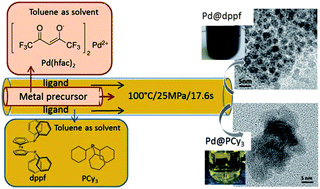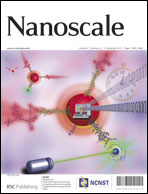Continuous coflow synthesis of hybrid palladium nanocrystals as catalysts for borylation reaction†
Abstract
The combination of highly active Pd nanocrystal (NC) types with tailored surface properties (various ligands) – e.g. organic–inorganic hybrid NCs – as catalysts opens avenues towards new synthetic pathways, implying a faster practical alternative for adjusting and screening the reaction conditions. Pd@dppf and Pd@PCy3 NCs have been successfully prepared via a continuous supercritical fluid assisted coflow route with promising results as catalysts in borylation reaction. It has been found that the ligands not only influence the catalytic properties of the systems, but also contribute to Pd metal core characteristics (size, shape and time stability).


 Please wait while we load your content...
Please wait while we load your content...